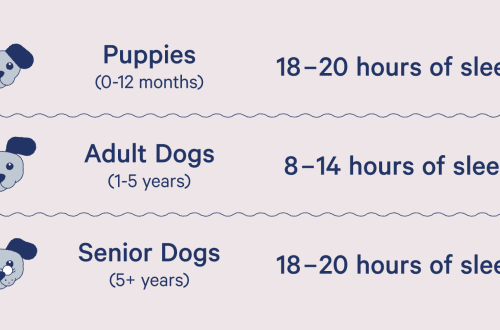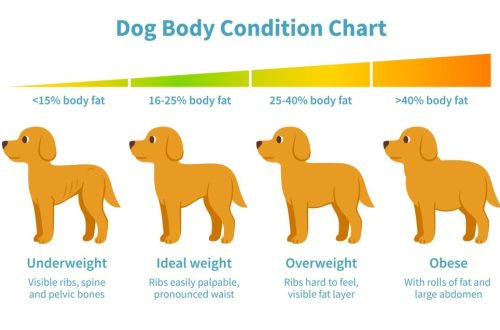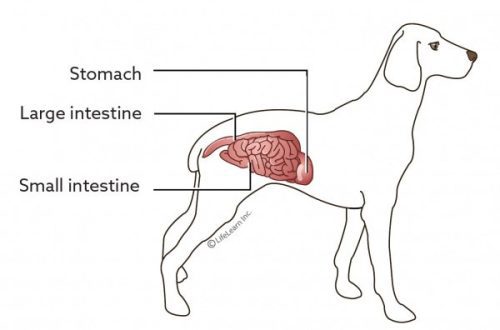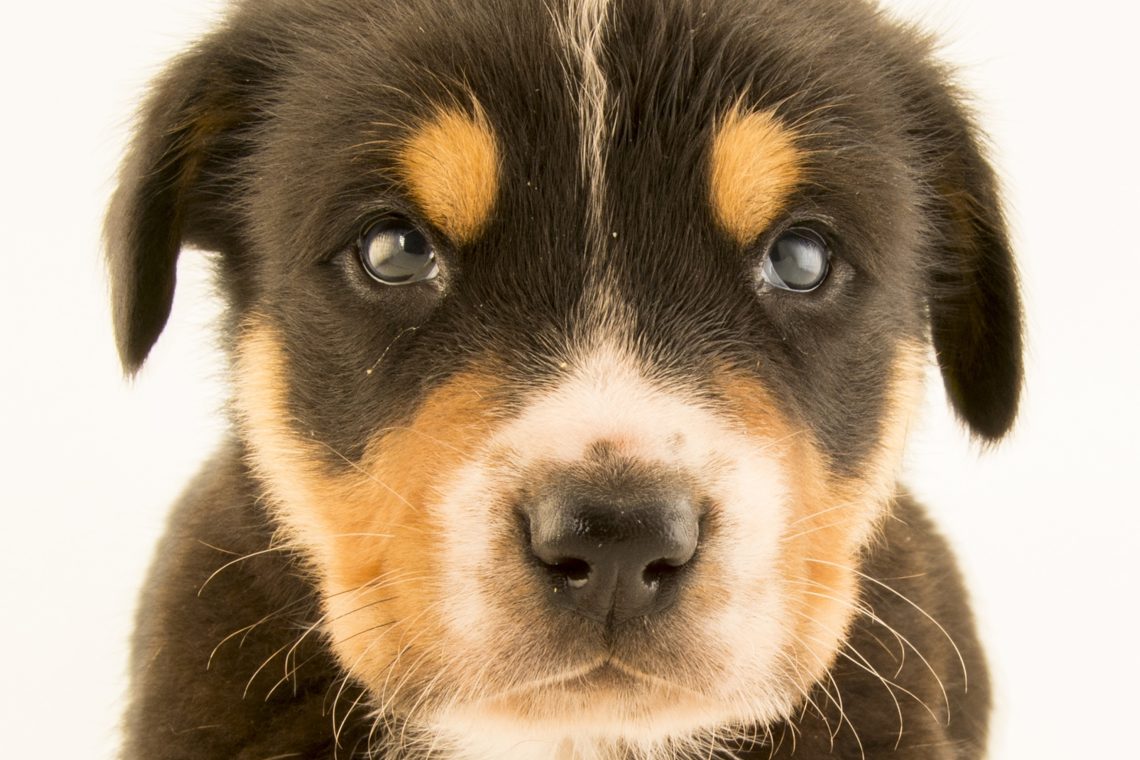
Dogs

It is useful for the owners to know about the timing of the onset of this process, the features of estrus, and possible pathologies. This will allow you to plan the dog’s pregnancy in advance and avoid unpredictable cases, as a result of which you then have to place the puppies in good hands.
Let’s figure out what estrus is and what happens to the animal at this time.
Contents
Dog’s first heat
To the question of how many months the first estrus begins in dogs, veterinarians do not give a definite answer: age can vary. This is due only to the individual physiology of the dog itself, and may also depend on the breed:
in representatives of small and decorative breeds, the first estrus can occur as early as 6–8 months. For example, dachshunds begin to show activity from 6 months, a similar thing happens in Pomeranian and German Spitz breeds;
if the girl is larger, such a process in her body can begin at 8-10 months. For example, bitches of Cocker Spaniels, Fox Terriers or Golden Retrievers are later: such dogs start walking from 9-10 months. And females of the St. Bernard, Caucasian Shepherd and other large breeds can appear in estrus only at the age of 10-12 or even 15 months.
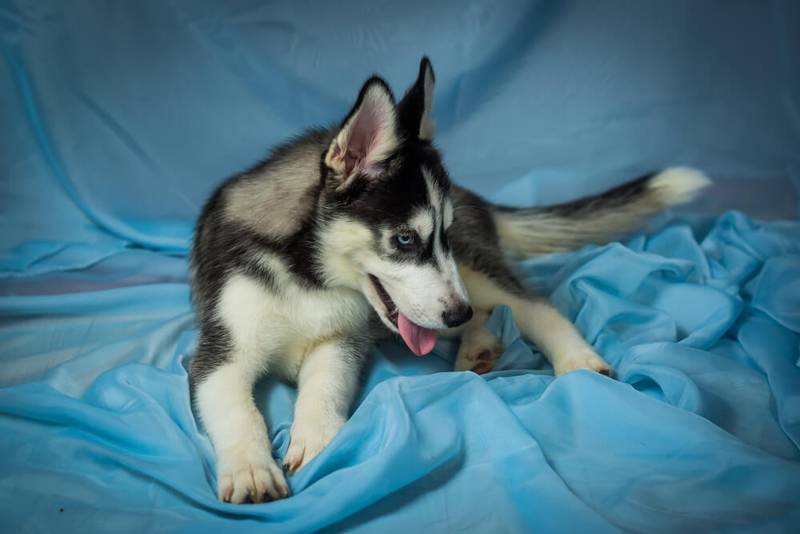
In addition, the timing of the first estrus may depend on the state of health and physiological maturity. By the way, it is the latter circumstance that strongly affects the readiness of the bitch for the first act of mating. When physiological and puberty have come in full measure, only then can we expect healthy and numerous offspring.
For this reason, it is not recommended to enthusiastically look for a groom for a dog when in heat for the first time. Most likely, the babies of such a bitch will be weak, and there can be no more than 3-4 individuals in the litter, and sometimes only one fetus. Moreover, when mating during the first estrus, pathological childbirth or complications during pregnancy due to insufficient physiological maturity are quite possible.
Owners of all breeds of dogs need to remember also about such a feature as hidden estrus. For the first time, it may go unnoticed, with no visible signs or with mild symptoms.
In general, it is better for puppy owners to consult a veterinarian in advance and find out when estrus usually begins in dogs of this breed. From how competent the owner in this matter depends, without exaggeration, the health of the dog. Knowing at what age the dog has the first estrus, you can observe it more closely so as not to miss this moment.
How long does estrus last in dogs
There are no serious differences of opinion regarding the duration of this sexual phenomenon – regardless of the breed and other signs and circumstances, the duration of estrus is traditionally 20–22 days.
Specifically, how many days a dog’s estrus lasts cannot be predetermined in advance. Each dog is unique in this way. The duration of this process is affected by the physiological state of the animal, the type of breed, hormonal background, age and some other factors. The duration is also affected by the condition of the dog’s reproductive system.
In some cases, in too young dogs or with minor pathologies of the reproductive system, the number of days during which estrus goes up to 28.
The duration of the cycle can sometimes be a little longer – up to 25-28 days with estrus in large breeds. And a little less – about 20-25 days – the duration of estrus in dogs of medium and small breeds.
Completely these indicators stabilize along with the onset of physiological maturity. On average, estrus lasts as long as the body needs to produce hormones and fertilize. But it’s not worth hitting the dog at the first sign. She will be completely ready for conception only by the 8-9th day. Until then, attempts by males will be rejected. The peak will be around the 10-17th day of estrus. And already by the 22-23rd day of this cycle, the female again becomes indifferent to her cavaliers.
Having dealt with how long estrus lasts in dogs, let’s move on to its frequency.
Frequency of estrus
Seasonality does not affect the hormonal surges in the dog’s body, but each individual has certain months and even seasons for estrus. Since each bitch walks twice a year (in rare cases, maybe 3 times a year, against the background of hormonal disruptions and inflammatory processes), the frequency between the first and second estrus is usually 4-6 months. The exceptions are older dogs and representatives of some breeds: for example, huskies, huskies, basenjis. They have an interval between each cycle can be one year.
In addition, estrus occurs once a year in some service dogs that are subject to increased physical exertion. In many animals kept in enclosures, the multiplicity of estrus is also once a year.
The estrus ends at the age of 10-14 years, but this figure is approximate and depends on what breed of bitch, how often she had cycles throughout her life, how many times she was whelped. In general, estrus occurs for as many years as physiology allows to bear offspring. Therefore, it is impossible to give a definite answer to the question at what age estrus stops.
Next, we will look at the phases of heat and how long they last.
4 estrus phases
In order to more accurately determine the estrus, in time to identify the appropriate period for mating, it is necessary to maintain a calendar in which all information about the cycle is noted, including such information:
age (months) of first heat;
how many days a dog walks during estrus;
frequency of cycles and their number per year.
In addition to keeping a calendar with such data, it is advisable for the owner to observe his pupil, starting from the first estrus, to note changes in her behavior in different phases of the cycle. There are only four of them, and in each of them special signs are manifested in the behavior and readiness of the dog for mating.
It must be understood that the duration of the phases may vary depending on the breed, since, for example, in large breeds, estrus lasts a few days longer.
Proestrus
This is the initial stage, in which the first signs of the dog’s readiness for contact with the opposite sex are just emerging. The bitch at this time begins to be interested in males, but when they try to establish intimacy, she shows aggression or runs away. The dog often tries to sit on the tail, obeys the owner poorly, and is reluctant to follow commands. Proestrus lasts from 1 to 7-10 days, depending on the characteristics of the breed, age and hormonal levels. On the 3-4th day of this stage of estrus, bloody discharge begins to appear.
estrus
The period of peak activity, when the bitch is ready to mate. She not only shows interest in males, but is also ready to let them in. The estrus phase lasts 6–9 days, depending on the breed (as we remember, the duration of estrus in large, medium and small breeds of dogs can vary, which also affects the phases). And at this time, the discharge takes on a translucent appearance with a pink tint. This period is the best for mating. The dog often whines, crouches, constantly lies on his stomach, shifts his tail to the side.
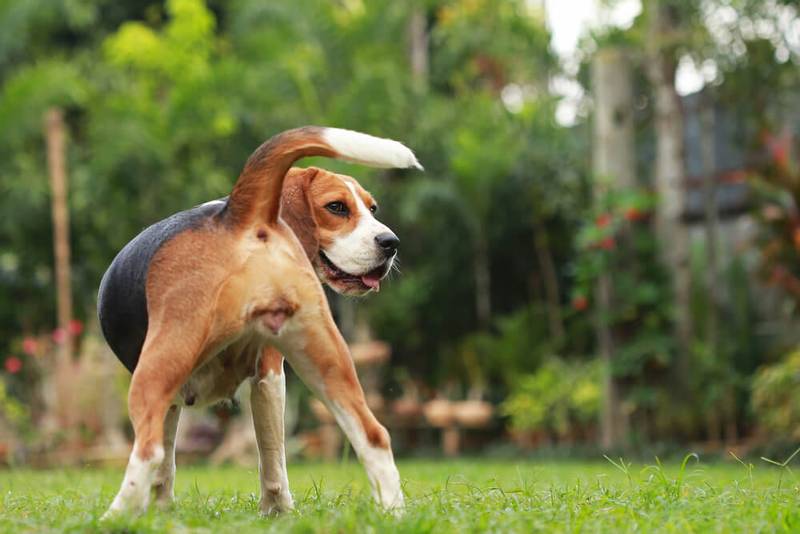
During the period of metaestrus (or diestrus), the bitch’s activity subsides, she almost does not react to the presence of males, her character becomes balanced. This phase falls on the 17-23rd day from the onset of the first signs of estrus. At this time, mating is undesirable, since the probability of fertilization is getting lower every day. Ovulation no longer occurs, and conception is almost impossible.
Anestrus
This phase is the period between estrus. Usually it lasts from 4 to 7 months, depending on age and physiological characteristics. During this period of estrus, there is no discharge, the character of the dog does not change dramatically.
Dog behavior during heat
The bitch, starting from the first day of the sexual cycle, quickly loses control of her composure. What does the owner need to know first of all in order to prevent unwanted mating?
The dog’s behavior can change exactly the opposite: always calm and docile, it becomes overly energetic during estrus days;
Interest in relatives of the opposite sex also changes extraordinary: either she does not want to see anyone, then suddenly males become the only creatures that she needs;
Appetite is also unstable, and in different dogs in their own way. Some need as much food as possible, others do not even look at their bowl;
Violations in the work of the urinary system is an almost obligatory symptom.
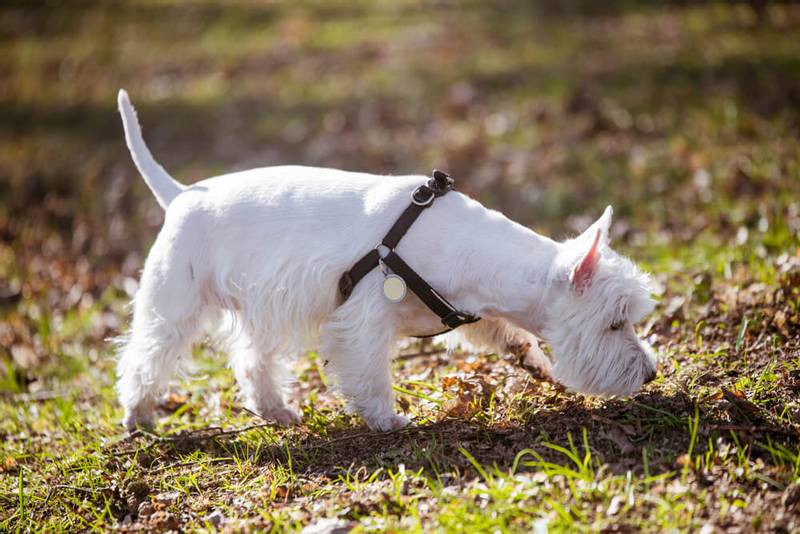
Now a little more about these and some other changes in the behavior of the animal. Knowing this is necessary at least in order to have an idea of uXNUMXbuXNUMXbwhat to do when estrus begins.
In this context, it is immediately necessary to pay attention to three such facets of the bitch’s behavioral factors:
changes in relations with males;
changes in relationships with other females;
changes in relationship with the owner.
In relation to males, the bitch during estrus shows interest depending on the phase of the cycle. At the initial stage (up to 10 days), she does not show much affection and can even run away from annoying boyfriends. In some cases, it can show aggression towards the gentleman, although it is not averse to getting to know each other.
Only in the peak phase of estrus will the dog be ready to show loyalty and let the boyfriend in. Moreover, during this period, the female becomes so complaisant and ready for mating that even she herself begins to take the initiative.
With lingering sounds, she can invite males to her. Some of the breeds (like the Husky) are ready for all sorts of tricks just to find a mate. They make escapes from enclosures, can dig under fences, break off the leash or simply gnaw it.
In the final phase, estrus is accompanied by relative calm. Sometimes there are emotional outbursts under the influence of fading hormones, but they are less and less by the end of the cycle. Males in this period are almost not interested.
For other females, the situation is more complicated. Often in all phases of estrus, a dog can show aggression towards its competitors. Moreover, almost nothing stops her – neither the size nor the number of rivals.
No less tense are the relationships with the owners. No matter how trained the bitch is, most often estrus is manifested by disobedience. She may not even react to her nickname the first time. In relation to the owner, the dog may react in different ways:
show love, friendliness, attention with all your appearance;
can ignore commands, be disobedient. This is especially evident in the second phase of estrus.
During this period, the animal can arbitrarily leave the owner for a walk and (almost with one hundred percent probability!) drag it on a leash to places where other relatives gather. Especially if there is a male.
Anxiety is one of the important signs in the behavior of a bitch during the onset of estrus. The animal is always trying to sniff out something, look around the house or aviary, howl.
Frequent urination is another such characteristic symptom. The dog often marks its path, so sometimes you have to stop literally every 50 meters.
During this period, signs of ingenuity and ingenuity are especially pronounced. The dog can demonstrate complete complaisance, calmness, as long as it is released from the leash.
At the time of estrus, it is better to abandon the standard training methods and not teach any new commands. During this period, it is better to repeat previously learned commands, ending the course with already developed skills and praise.
Possible problems and consequences of estrus
Allocations
One of the main, but not particularly critical, problems in which estrus manifests itself is red discharge stains on the floor coverings in the house. In three weeks they will be found everywhere, at this time you can use special underpants for dogs, with replaceable sanitary pads.
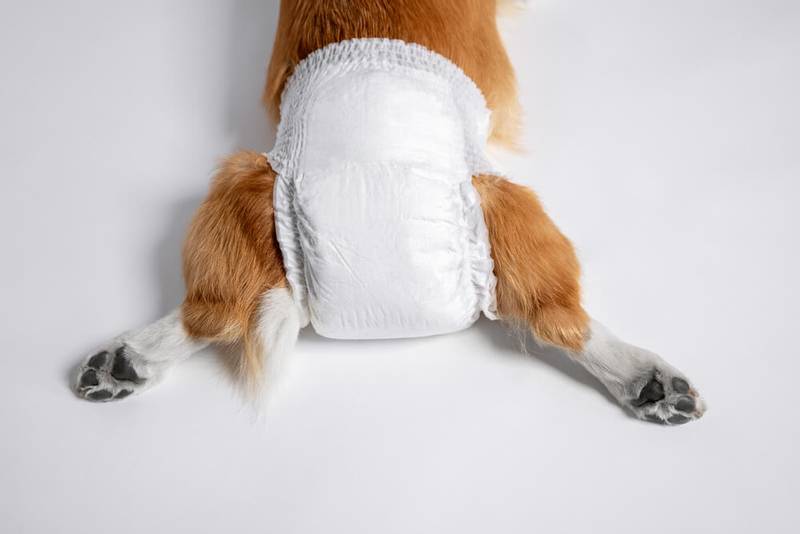
Hidden estrus
A completely opposite problem may also arise, when, according to all the signs and dates, the estrus passes, and no discharge is observed anywhere. This is the case when there is a hidden form. Such estrus lasts as long as the usual one, and the changes in the bitch’s behavior are similar. Sometimes it can be caused by abnormalities in the physiology or diseases of the reproductive organs. In any case, it would be wise to see a veterinarian.
Violation of cycle
Violations of the sexual cycle in bitches can be manifested by deviations in the frequency of estrus and in the volume of excretions. The causes of such disorders are inflammatory diseases, sexual infections of bacterial and fungal origin, hormonal disorders.
Frequent urination
It is quite a natural phenomenon – when a bitch often asks for small needs during a cycle. She has frequent urge to urinate while walking.
There can be two reasons for this behavior:
marking the territory and your path;
occurrence of urological diseases.
If at the end of the second – the beginning of the third phase, the frequency of urination decreases, then there is absolutely no reason for concern. If this pattern persists, you need to be examined by a veterinarian.
unwanted pregnancy
This problem is most often an oversight of the dog owner, when there is an oversight, lack of isolation from males.
To prevent such consequences, you need to follow the elementary rules:
keep the dog on a leash;
in case of encroachment by males, take her in your arms or quickly take her home;
wear special panties for a walk;
securely isolated in an aviary.
The mistake is the decision of some owners to use special hormonal drugs that stop estrus, and contraceptives. This, if used systematically, will cause irreparable harm to the animal.
False pregnancy
This problem manifests itself in the diestrus phase and is caused by disturbances in the physiology of the hypothalamus and ovaries. The dog shows signs of maternal instincts, the volume of the abdomen increases, changes in behavior occur, the mammary glands swell, milk may appear.
If after 2-4 weeks these symptoms do not disappear on their own, it is necessary to seek the help of a veterinarian.
The article is not a call to action!
For a more detailed study of the problem, we recommend contacting a specialist.
Ask the vet
July 22 2020
Updated: February 13, 2021



